The feast of Saint Valentine of Rome was designated in the year 496.
The date? February 14th, of course.
About 900 years later, Saint Valentine and his feast day (already celebrated with food, drink, jousting, poetry, singing, and dancing) somehow became associated with romance, passion, and love.
And so began the need to send Saint Valentine’s greetings—letters, cards, and books that were chock full of flowers, hearts, rhyming verse, sly suggestions and outright innuendos, and plump cherubs, puppies, and babies!
During the 19th century—when my historical mystery Fanny Newcomb & the Irish Channel Ripper is set—cards and postcards celebrating Saint Valentine’s Day reached a new height of romantic expression.
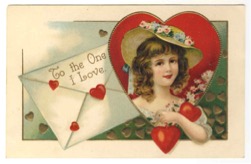
But in the mid-19th century and continuing into the mid-20th century, many valentines took a darker, meaner, and even stinkier turn for the worse.
What? You haven’t heard of Vinegar Valentines?
Bitter, caustic, and often downright nasty, Vinegar Valentines were created to offend and insult the recipient.
Vinegar Valentines consisted of two elements: first of all, they had graphics that included slimy animals like snakes and slugs or grotesque caricatures of men and women. Secondly, these missives included a rude rhyme or mean quotation.
And although my Fanny Newcomb would never ever, ever-ever-ever send out a Vinegar Valentine, I still thought you’d like to see a few stinkers for yourself.
The Serpent

The Saleslady
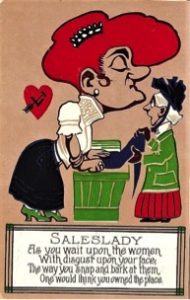
The Suffragette
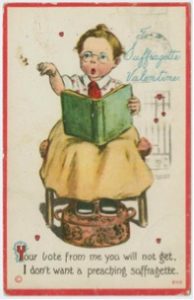
Mr. Bald Head
(and I admit it! I’m glad that there were Vinegar Valentines for men also!)
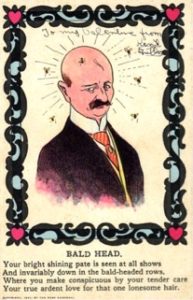
The Surgeon
(A Civil War Vinegar Valentine)
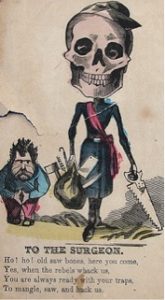
Fortunately, Vinegar Valentines went out of style long ago, and today I can wish you a very happy Saint Valentine’s Day with a sweet postcard full of hearts and happy thoughts!
Happy Valentines Day from FANNY NEWCOMB & THE IRISH CHANNEL RIPPER!


